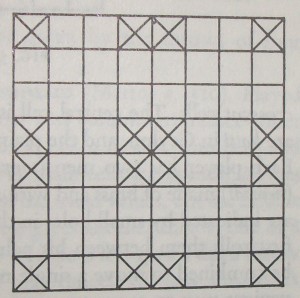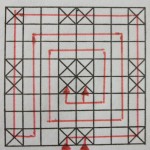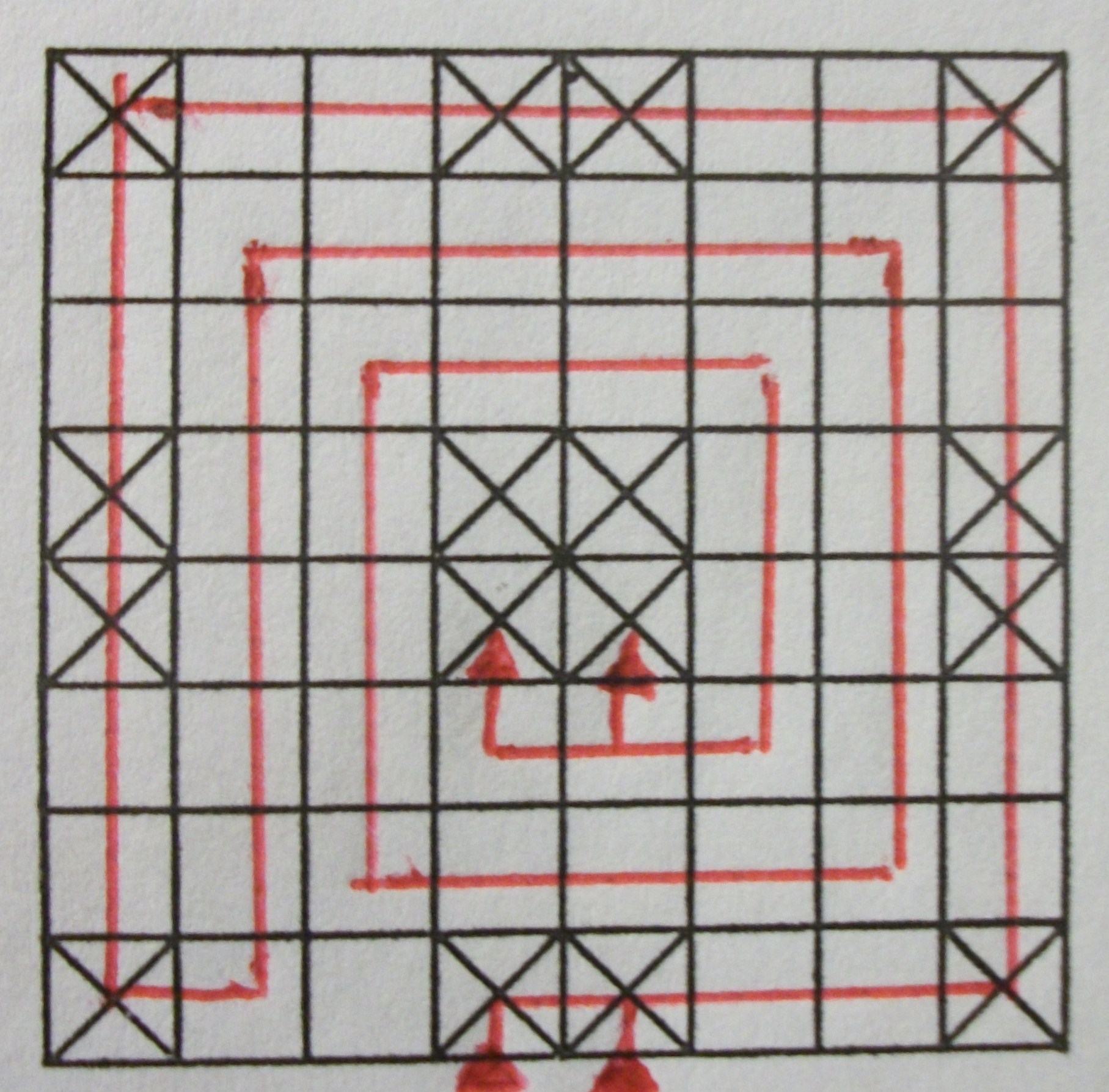
Ancient games are revealing snapshots into the past. They share enjoyments, activities, developments, and beliefs of the people who played them. Originating in India, Ashtapada, meaning eight square, refers to both the game board’s dimensions and the game played upon the sixty-four squares. The game is of a simple race type and shares that pleasure was found by a leisurely method of play.
Ashtapada is possibly the first game played on an 8×8 game board in India. It is one of the oldest board games of the region. Later, and believed to originate in India, this size of board would be used to create the popular and skilled game of Chess.
Ashtapada is seen mentioned in the earliest known list of games as one in which the Gautama Buddha wouldn’t play. Including other favorite pastimes enjoyed by people of the period, this interesting record dates Ashtapada back to around the 5th or 6th century BC; since Ashtapada must have been played during his life to have been acknowledged in the Buddha’s account.
Besides being an 8×8 squared board, the board consists of certain marked spaces which denote safety, entry, or exit for players. The four corners, the four central squares, and two center squares on each side are crosscut, like shown. Two, three, or four people can play the game. If two players are playing, each would sit on one side of the board and enter their two pieces onto the center crosscut squares along the outer side. The object of the game is to be the first player to enter and exit both his pieces. A player exits his piece once reaching the center squares.
 The path of play begins by moving along the outer edge, counterclockwise, and then moving clockwise around the inner squares to meet center. Movement for the game is determined by four cowrie shells. The count is given by the number of ‘mouths’ that land face-up. If the shells land with four mouths face-up, the count is a movement of 8. If the shells land with three mouths face-up, then a ‘grace’ point is applied and can be used as movement of 4, or 3 and 1(for two pieces). This ‘grace’ point is used to enter or exit a piece. In order to enter or exit, a player must use a ‘grace’ point.
The path of play begins by moving along the outer edge, counterclockwise, and then moving clockwise around the inner squares to meet center. Movement for the game is determined by four cowrie shells. The count is given by the number of ‘mouths’ that land face-up. If the shells land with four mouths face-up, the count is a movement of 8. If the shells land with three mouths face-up, then a ‘grace’ point is applied and can be used as movement of 4, or 3 and 1(for two pieces). This ‘grace’ point is used to enter or exit a piece. In order to enter or exit, a player must use a ‘grace’ point.
If a player lands on a space which is occupied by his opponent’s piece, his opponent’s piece is sent off the board and needs to re-enter. However, if players meet on ‘crosscut’ spaces, their pieces are safe and remain on board.
![Radha-Krishna_chess[1]](https://allaboutfunandgames.com/wp-content/uploads/2013/01/Radha-Krishna_chess1-300x185.jpg) As seen depicted in the side image, two players are playing ‘chess’ on the specially marked Ashtapada board. The painting dates to around 1750. Although the marked squares do not hold any meaning for the playing of Chess, the Ashtapada board was known to be commonly used. Players simply ignored the crosscut squares while playing Chess and other games which used the 8×8 surface.
As seen depicted in the side image, two players are playing ‘chess’ on the specially marked Ashtapada board. The painting dates to around 1750. Although the marked squares do not hold any meaning for the playing of Chess, the Ashtapada board was known to be commonly used. Players simply ignored the crosscut squares while playing Chess and other games which used the 8×8 surface.
Ashtapada has been seen played by merely scratching the board on the ground or with the design stitched on fabrics. Pebbles, or other readily small objects, are used for game pieces. The easy set-up and quick play made Ashtapada an enjoyable, friendly, competitive game for all ages.

Hello blogger, i must say you have very interesting content here.
Your website should go viral. You need initial traffic only.
How to get it? Search for: Mertiso’s tips go viral